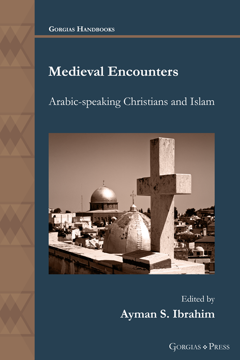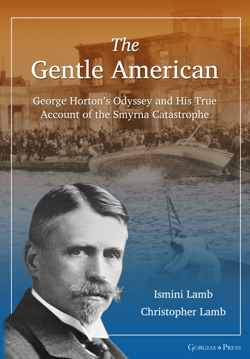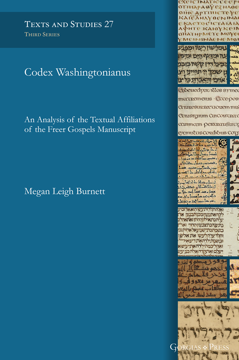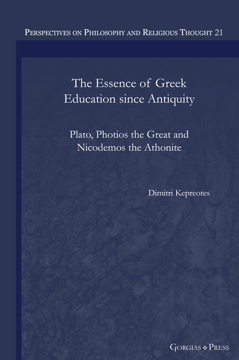On This Day (August)
The Armenian Church Synaxarion (Yaysmawurkʿ)
Edited and Translated by Edward G Mathews Jr
Series: The Armenian Church Synaxarion 8
ISBN: 978-1-4632-4443-9
The Armenian Church Synaxarion is a collection of saints’ lives according to the day of the year on which each saint is celebrated. Part of the great and varied Armenian liturgical tradition from the turn of the first millennium, the first Armenian Church Synaxarion represented the logical culmination of a long and steady development of what is today called the cult of the saints. This volume, the first Armenian-English edition, is the eighth of a twelve-volume series—one for each month of the year—and is ideal for personal devotional use or as a valuable resource for anyone interested in saints.
$79.00 (USD) $47.40 (USD)
Journal of Language Relationship 19/3-4
Editor-in-Chief Vladimir Dybo; Managing Editor George Starostin; Editorial Secretary Tatiana Mikhailova; Editorial Board Anna Dybo, Manuel Molina, M. N. Saenko & Ilya Yakubovich
Series: Journal of Language Relationship 19/3-4
ISBN: 978-1-4632-4445-3
The Journal of Language Relationship is an international periodical publication devoted to the issues of comparative linguistics and the history of the human language. The Journal contains articles written in English and Russian, as well as scientific reviews, discussions and reports from international linguistic conferences and seminars.
$74.00 (USD) $44.40 (USD)
Medieval Encounters
Arabic-speaking Christians and Islam
Edited by Ayman S. Ibrahim; Contribution by Mark Beaumont, David Bertaina, Clint Hackenburg, Sandra Toenies Keating, Michael F. Kuhn, John C. Lamoreaux, Mourad Takawi, Jack Tannous, Alexander Treiger & Mina Yousef
Series: Gorgias Handbooks 55
ISBN: 978-1-4632-4447-7
A sourcebook of major Arabic Christian theologians and texts from the 9th-11th centuries. Christian authors who spoke and wrote Arabic had no choice but to engage with Islam and the complex realities of life—initially as a majority, later as a minority—under Muslim rule. They had to express their theology in new ways, polemicize against the claims of a new religion, as well as defend their doctrines against Islam’s challenges.
$55.00 (USD)
The Gentle American
George Horton’s Odyssey and His True Account of the Smyrna Catastrophe
ISBN: 978-1-4632-4449-1
How many lives can one man save? Never enough, Horton realized. As his ship backed away from Smyrna’s wharf, he could better see the helpless, teeming crowd on the waterfront trapped between the sea and a raging inferno. He was not consoled by rescuing his shipload of refugees, nor by the many other Christian, Jewish, and Muslim lives he had saved during his service as American consul. His focus was on the people before him threatened with fire, rape, and massacre. Their persecution, he later said, made him ashamed he “belonged to the human race.” Helping them would not be easy, however. His superiors were blocking humanitarian aid and covering up atrocities with fake news and disinformation to win Turkish approval for American access to oil. When Horton decried their duplicity and hard-heartedness, they conspired to destroy his reputation. Undaunted, Horton pursued his cause until it went to the President and then Congress for decisions that would set the course for America’s emergence as a world power. At stake was the outcome of WWI, the stability and liberality of the Middle East, and the likelihood of more genocide.
$60.00 (USD)
Codex Washingtonianus
An Analysis of the Textual Affiliations of the Freer Gospels Manuscript
Series: Texts and Studies (Third Series) 27
ISBN: 978-1-4632-4451-4
This book investigates the biblical text of Codex Washingtonianus, also called the Freer Gospels, Codex W and GA 032. There are numerous distinctive features in this early and important gospel book, including the differing affiliation of its text in separate sections (known as block mixture). The study examines and evaluates the blocks of text in this manuscript through the extensive application of the technique of quantitative analysis, which sheds light on the textual relationship between Codex Washingtonianus and other gospel manuscripts. Paratextual features, orthographic variations, and singular readings are also described and analysed. This book thus functions as an investigation of the phenomenon of block mixture in itself as well as the character of this particular manuscript, confirming many of the findings of previous scholarship and providing new data from the context of modern research.
$114.95 (USD) $68.97 (USD)
The Essence of Greek Education since Antiquity
Plato, Photios the Great and Nicodemos the Athonite
ISBN: 978-1-4632-4453-8
This book attempts to answer the question: what are the essential features of Greek education? In so doing, it explores the extent to which the educational ideals and practices of paideia have displayed continuity from classical Athens until modern times. The views of Plato, Photios the Great (9th century) and Nicodemos the Athonite (18th century) are examined in particular, revealing significant stages of development. The book offers a presentation of what paideia holds up to be its own goal on its own terms. The proponents of the paideia tradition sought an answer to the age-old question, ‘What constitutes the human person?’ The response to that enigma determined everything else. Education took shape accordingly and led to a lifelong process of harmonising the respective functions of the soul and body. On account of its value on both a personal and communal level, paideia is of paramount significance for Plato and other exponents, such as Nicodemos. Their individual legacies stand like bookends on either side of some 22 centuries of Greek education that are appraised within these pages.
$114.95 (USD) $68.97 (USD)





